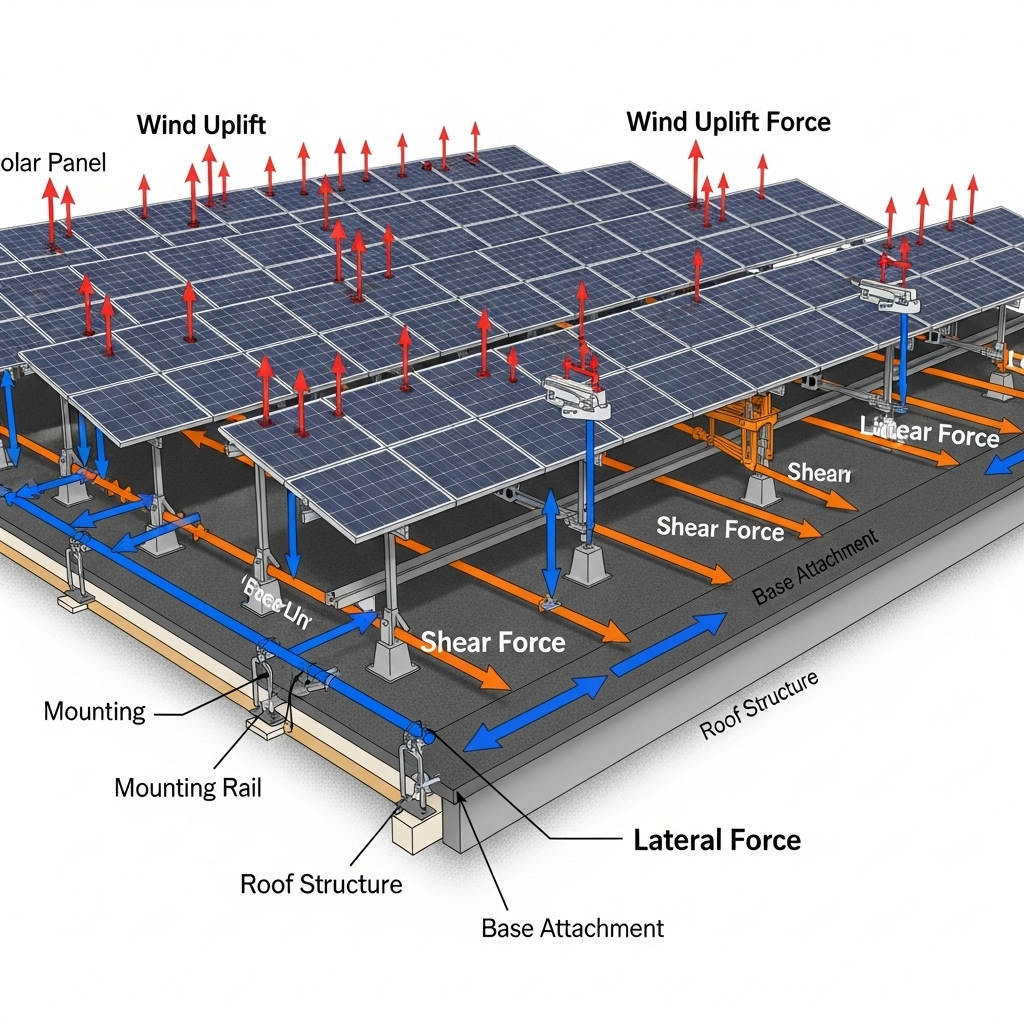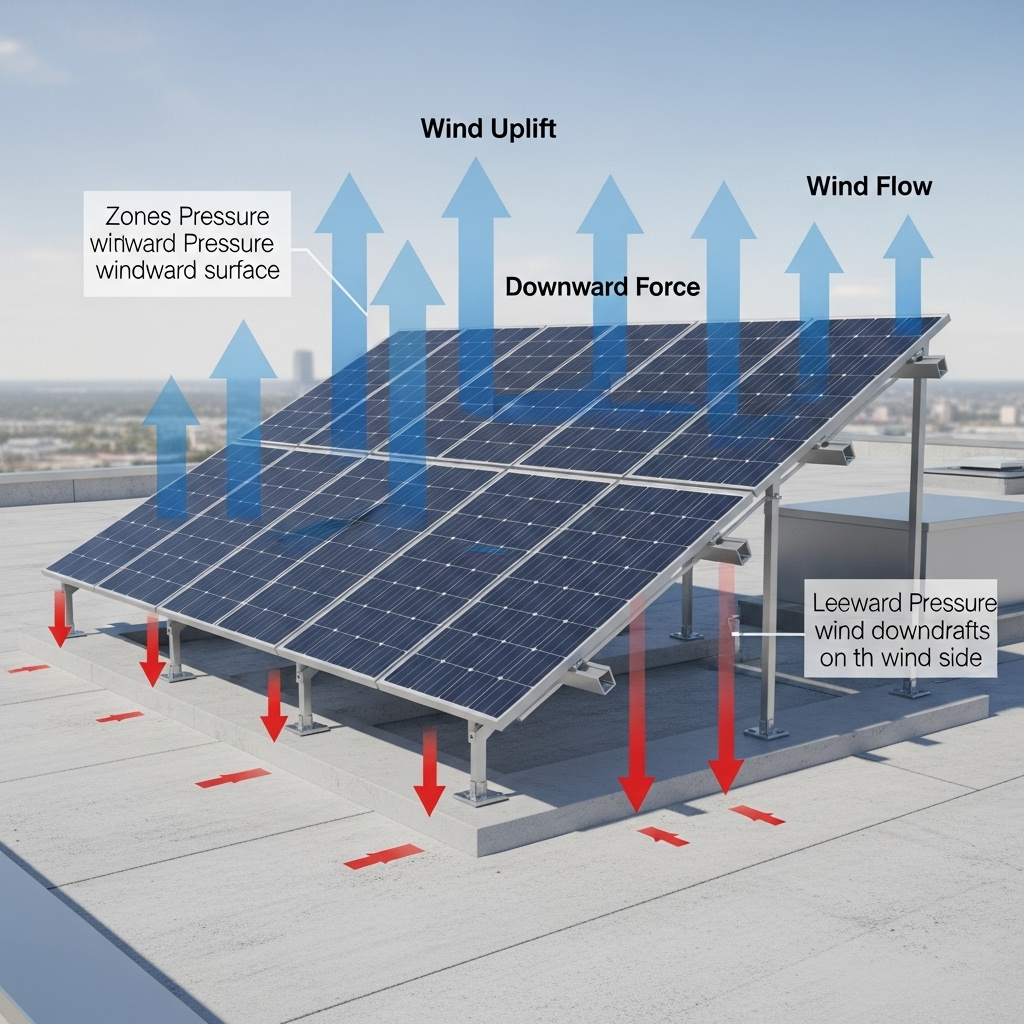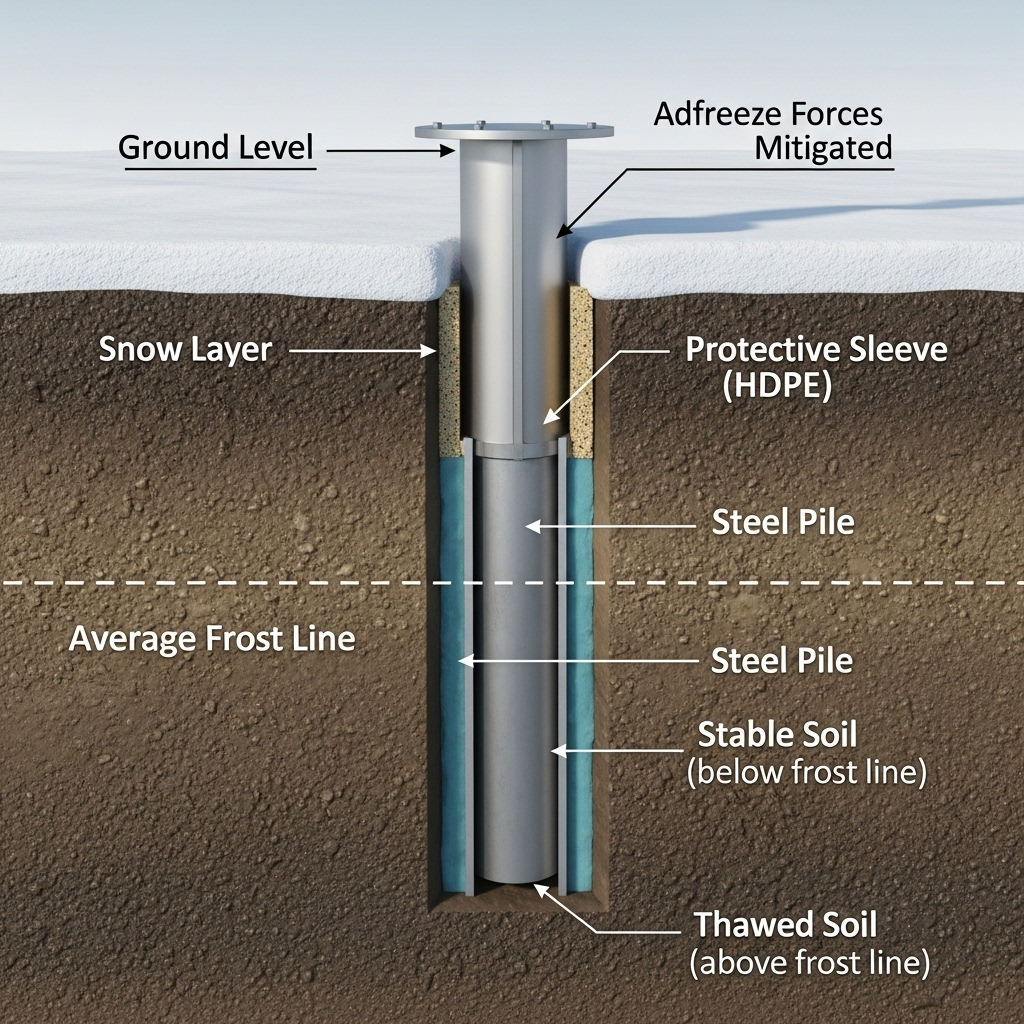Selecting the right roof mounting hardware is foundational to the safety, longevity, and performance of your solar panel system. It involves more than just attaching panels to a roof; it requires a careful analysis of structural loads, wind forces, and local building regulations. Making an informed choice prevents roof damage, ensures system stability, and protects your investment for decades.
Understanding the Forces: Load Capacity Explained
Your roof and the mounting hardware must support the constant and variable weights they will be subjected to. These forces are categorized as static and dynamic loads, and understanding them is the first step in proper hardware selection.
Static Loads: The Constant Weight
Static loads, or dead loads, include the combined weight of the solar panels, racking, and all associated hardware. A typical solar panel weighs around 40-50 pounds, and a complete system adds several pounds per square foot to your roof structure. Before any installation, a professional should conduct a structural assessment to confirm your roof can handle this additional, permanent weight. This assessment is crucial for maintaining the structural integrity of your home.
Dynamic Loads: The Variable Forces
Dynamic loads are temporary forces, with the most common being snow and wind. Snow load varies significantly by region and is a critical calculation. A foot of light, fluffy snow might add five pounds per square foot, while heavy, wet snow can add over twenty pounds. Your mounting hardware must be rated to handle the maximum potential snow load in your area. In seismically active regions, the hardware must also be designed to withstand potential ground motion.

Taming the Wind: Wind Resistance is Non-Negotiable
Wind is one of the most powerful and complex forces acting on a solar array. Improperly secured panels can be lifted from the roof, causing catastrophic damage to your property and creating a serious safety hazard. Hardware selection must account for the specific wind conditions of your location.
How Wind Affects Solar Arrays
Wind flowing over a roof and solar panels creates areas of positive and negative pressure. This results in three primary forces: uplift (vertical lift), shear (horizontal drag), and lateral force (sideways push). The corners and edges of a roof experience significantly higher uplift forces, requiring stronger attachments or more frequent connection points in these zones. The tilt angle of the panels also dramatically influences the amount of wind load the system will experience.
Wind Speed Ratings and Exposure Categories
Engineers use standards like ASCE 7 to calculate wind loads. A key part of this calculation is determining the basic wind speed for your area and identifying the correct 'Wind Exposure Category'. These categories classify the surrounding terrain, which affects how wind behaves.
| Exposure Category | Description | Impact on Mounting Hardware |
|---|---|---|
| B | Urban and suburban areas, wooded areas, or other terrain with numerous closely spaced obstructions. | Lower wind loads due to surrounding obstructions. |
| C | Open terrain with scattered obstructions, including flat open country and grasslands. | Higher wind loads; requires stronger hardware and attachment methods. |
| D | Flat, unobstructed areas and coastal regions directly exposed to wind flowing over open water. | The most severe wind loads, requiring specialized, high-strength mounting solutions. |
Navigating the Rules: Building Codes and Compliance
Compliance with building codes is not optional; it is a legal requirement that ensures safety. These codes provide the minimum standards for solar installations, covering everything from structural attachment to electrical safety.
The Role of Local and National Codes
The International Building Code (IBC) and International Residential Code (IRC) are common models, but your local Authority Having Jurisdiction (AHJ)—typically the city or county building department—has the final say. They may have specific amendments based on local climate and geological conditions. Codes also dictate fire safety requirements, such as maintaining clear pathways on the roof for firefighter access.
Documentation and Certification
Always choose roof mounting hardware that is certified to established standards, such as UL 2703. This certification ensures the system has been tested for mechanical strength, bonding, grounding, and fire resistance. A UL 2703 certification simplifies the system's electrical grounding, saving time and reducing the number of components needed. In many areas, especially those with high wind or snow loads, the AHJ will require a stamped letter from a licensed structural engineer verifying the mounting plan is safe for your specific property.
A Practical Selection Framework
With an understanding of loads, wind, and codes, you can apply a practical framework to select the right hardware for your specific project.
Matching Hardware to Your Roof Type
The type of roof you have is a primary determinant of the mounting hardware. Asphalt shingle roofs typically use flashed standoffs with lag bolts driven into the rafters. Metal standing seam roofs allow for non-penetrating clamps that attach directly to the seams, preserving the roof's integrity. For tile roofs, specialized hooks are used that slide under the tiles and attach to the underlying structure. Each system is engineered to distribute loads effectively without compromising the roofing material.
The Importance of System Integration
The mounting system is the foundation of a larger, integrated energy solution. Its reliability directly impacts the energy production and financial returns of your entire system. As the deployment of residential solar PV grows, ensuring a secure grid connection and stable performance is vital. According to a report by the IEA, the expansion of distribution systems is crucial for integrating this capacity. This highlights that every component, from the grid connection down to the smallest bolt, plays a role. The long-term output of your panels and the efficiency of your storage depend on the mechanical security provided by the mounting hardware. To get a complete picture, understanding the metrics behind solar storage performance provides context for why a robust physical installation is essential for achieving optimal energy independence and efficiency.
Final Considerations for a Secure Installation
Choosing the right roof mounting hardware is a critical decision that balances engineering principles with regulatory compliance. Start by thoroughly assessing the static and dynamic loads your system will face, particularly snow and wind. Next, ensure every component is selected and installed in strict accordance with local building codes and has the necessary certifications. While cost is a factor, prioritizing high-quality, certified hardware is an investment in the long-term safety and reliability of your solar energy system.
Disclaimer: This information is for educational purposes only. Always consult with a qualified structural engineer and a professional solar installer to design and install a system that is safe and compliant for your specific location and building. This does not constitute professional engineering or legal advice.
Frequently Asked Questions
What is the most important factor when choosing roof mounting hardware?
While all factors are important, ensuring the hardware is rated for your local wind speed and snow load is arguably the most critical for safety and durability. Failure to account for these dynamic loads can lead to catastrophic system failure.
How do I find out the snow and wind load requirements for my area?
Your local building department (AHJ) can provide the specific design criteria for your location. Professional solar installers and structural engineers also have access to this data and the tools to perform the necessary calculations.
Can I install solar mounts myself?
While some experienced DIYers may take on the task, it is generally recommended to hire a professional. Installers have the training, tools, and knowledge of local codes to ensure the installation is safe, waterproof, and structurally sound. Mistakes can lead to roof leaks and void your roof's warranty.
Does the type of solar panel affect the choice of mounting hardware?
Yes, to some extent. The size, weight, and frame design of the solar panel must be compatible with the mounting system's clamps and load ratings. The mounting system manufacturer will provide a list of compatible panel types and sizes.





Leave a comment
All comments are moderated before being published.
This site is protected by hCaptcha and the hCaptcha Privacy Policy and Terms of Service apply.